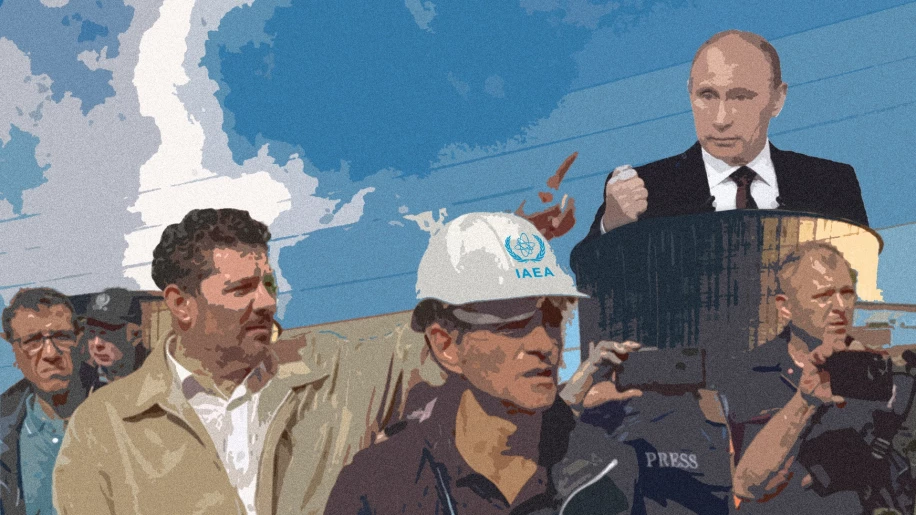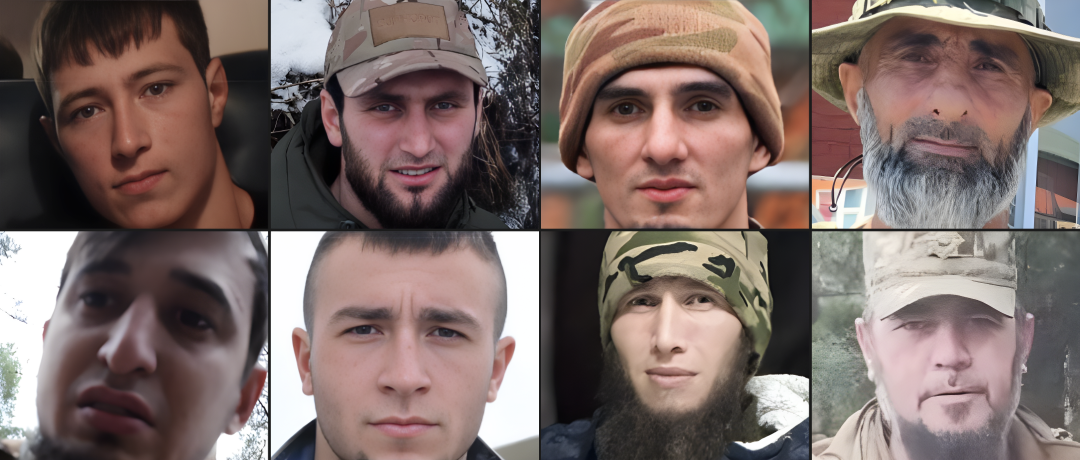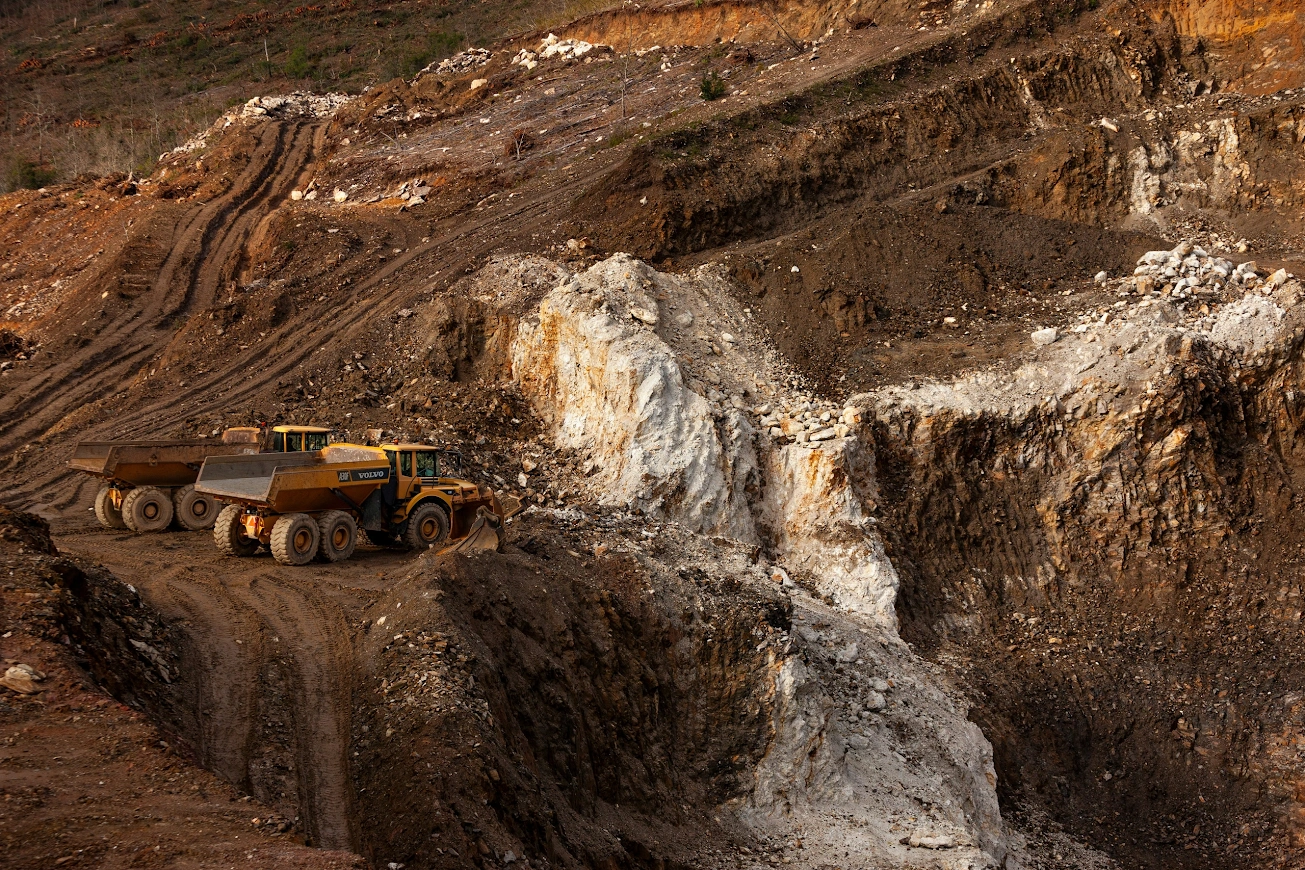The Molfar team publishes an overview of the activities of the International Atomic Energy Agency (IAEA). According to the materials of our investigation, it was possible to prove the agency's ties with the Russian Federation, the repetition of propaganda narratives in favor of the Kremlin, the ignoring of violations of radiation safety norms, and even the silence of accidents that occurred due to the fault of the Russian Federation.
The materials of our investigation were also used by the Tokar.ua media – Nazar Tokar's team processed our investigation, supplemented it with their own information and presented it in video:
The original text of the investigation is available 👉 at this link.
*If you want to get the research in another language, write to us about it at [email protected]
What is the IAEA?
Often in the news, we hear about the IAEA and the activities of this organization related to atomic energy. We investigated the work of the IAEA and how it operates during a full-scale war in Ukraine. To begin with, it is necessary to remember what kind of organization this is, and why it is constantly being talked about.
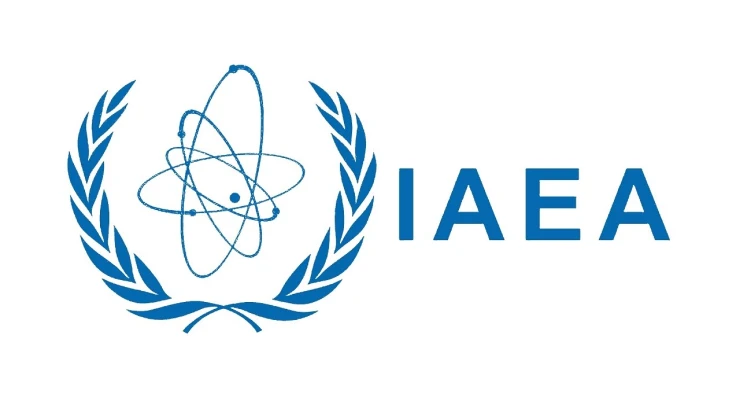
The IAEA is an international independent agency under the UN, which includes 175 participating countries.IAEA was established in 1957 to cooperate and control the peaceful use of nuclear technologies. The Soviet Union was among the 12 founding states that drafted the agency's charter. Since 1991, the Russian Federation has been the legal successor of the USSR in all UN bodies, which took its place here as well. The IAEA deals with issues of cooperation in the field of nuclear energy and ensures that the peaceful atom remains peaceful. The governing bodies of the IAEA are the General Conference and the Board of Directors. The conference includes representatives of all IAEA member states, its meetings are held annually, and the board of directors includes 35 states, and during 2017-2022 one of the board members was a representative of Russia.
According to the Charter, one of the tasks of the IAEA is to control the non-proliferation of nuclear weapons. After the collapse of the USSR, Ukraine had the world's third largest nuclear potential, and after its destruction, Ukraine signed a safeguard's agreement with the IAEA. Since 1998, all nuclear activities of Ukraine have been placed under the strict control of this organization.
Funding of the IAEA
The basis budget is the contributions of the participating countries. The main criterion for the number of contributions is the solvency of the country, but none of the countries can contribute more than 22%.
Since 2018, Russia has been responsible for three percent of the budget, while it can influence key decisions of the agency through the deputy director of the organization. In addition, for 2020-2023, Russia allocates almost 700,000 dollars per year for the training of specialists from countries that plan to use Russian technologies in nuclear energy, as well as 400,000 dollars per year for training events.
The IAEA and the silencing of problems
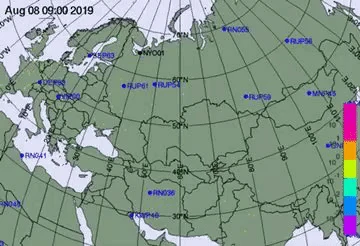
Despite the war against Ukraine, colossal international sanctions and other types of pressure, Russia continues to be a member of the IAEA. Even more. Russia can still influence IAEA decisions. And this form of power endangers the entire world security. There is no exaggeration in this statement. Consider recent examples.
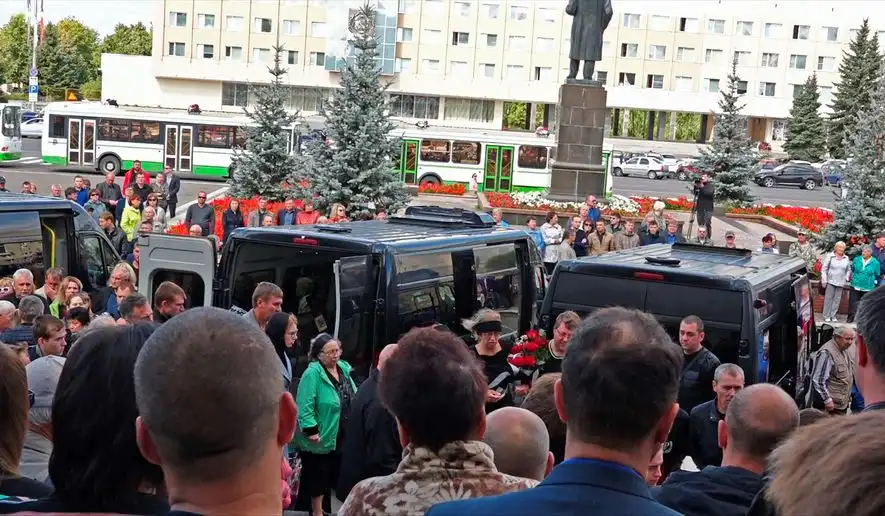
In August 2019, an explosion occurred near the Russian city of Arkhangelsk. Only according to official data, five people died immediately, two died later from acute radiation sickness, and four more received high doses of radiation. According to US intelligence, the explosion occurred during the rise of the Burevestnik with a nuclear engine. Due to an uncontrolled nuclear reaction, there was a release of radiation. Before that, the missile had been lying at the bottom of the White Sea for more than a year, where it fell after an unsuccessful test at the beginning of 2018.
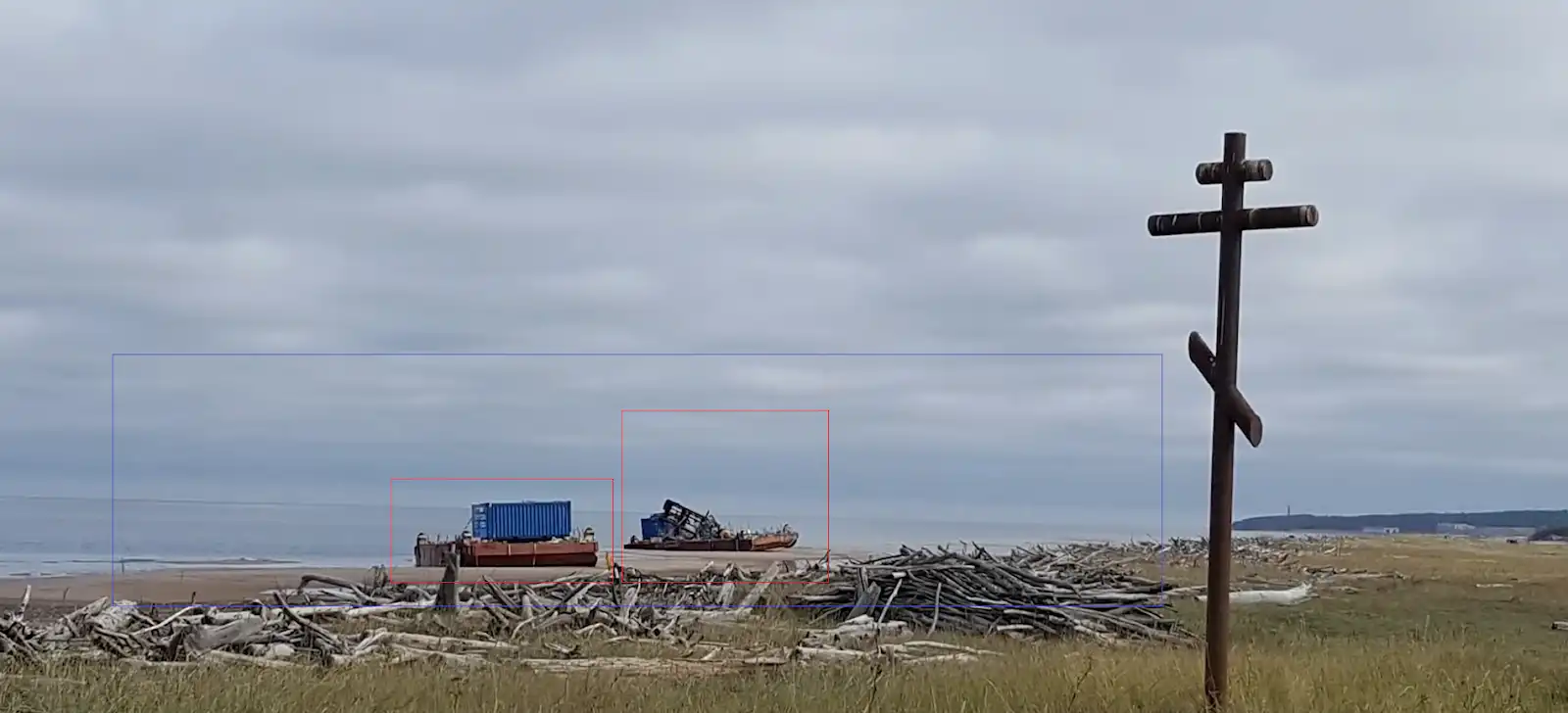
Two barges, on which the remains of missiles were probably transported after the incident, were left by the Russians for several months on the seashore near the village of Nyonoksa. The radiation background in the place where the radiation-contaminated barges stood reached 700 micro-roentgens per hour, which is 14 times higher than the permissible norm (the permissible norm of the radiation background in premises is up to 50 micro-roentgens per hour). On its website, the IAEA publishes reports on accidents in various countries, since 2000, 14 reports have been published. But among them, strangely, there is no data about the explosion in Nyonoksa.
With the help of the IAEA, the Russian Federation created the appearance of correct operation of its nuclear facilities. Despite the fact that the IAEA is supposed to monitor all the country's peaceful use of nuclear energy, the agency can inspect only one of Russia's thirty-six nuclear facilities. The question arises, why did the international commission agree to such conditions because the rules should be uniform for all participating members? But it would be disadvantageous Russia, even if it violates international agreements. And that's why they turn a blind eye to these violations. The IAEA cannot answer the main question regarding its responsibility: what is really happening with the Russian nuclear sector? The agency does not perform direct functions, does not express concern that it does not know how dozens of nuclear facilities on the territory of Russia work and whether they work at all. Paradoxically, a terrorist country influences the decisions of an organization that, on the contrary, should control its actions.

Compare the number of reactors in Ukraine and in Russia: 5 versus 37. Outside the Russian Federation, no one knows what is happening at 36 of the 37 Russian reactors. We do not know for sure whether the Russian nuclear power plants are actually working or have been inactive for a long time? Perhaps, instead of a peaceful atom, they are used for military purposes? Maybe some of the objects are in critical condition? This can be a threat not only to Russia, but also to the whole world. Because the consequences of Chernobyl were felt all over the world. And how many such potential "Chernobyls" can happen and happened in the Russian Federation – no one knows.
The attitude of the IAEA to Russia
— Chernobyl NPP
On March 9, 2022, after the seizure of the Chornobyl NPP by the Russians, the IAEA completely lost contact with all monitoring systems at the plant. It was possible to restore contact with the Chernobyl Nuclear Power Plant on May 11. What happened at the station during two months is not known for sure. In April, during the occupation of the Chernobyl Nuclear Power Plant, the IAEA published very limited data, assuring that radiation levels were “normal”. After the deoccupation, the IAEA conducts a mission at the Chernobyl nuclear power plant, confirming previous reports. But Greenpeace is conducting its own investigation and accuses the IAEA of understating the results. The Greenpeace investigative group found that the level of radiation in the places where the Russians were based is at least three times higher than the estimates published by the IAEA and corresponds to the level of nuclear waste.
In general, the IAEA has a complex and long-standing relationship with ChNPP. In 1990, Yuriy Kostenko was a member of the Verkhovna Rada commission investigating the causes and consequences of the Chernobyl accident. According to him, the Ukrainian commission came to the conclusion that the staff of the station, who were accused of unprofessionalism, worked absolutely correctly, according to the instructions received from the management. And when, in their opinion, the operation of the reactor deteriorated, they pressed the shutdown button of the chain reaction reactor. But instead of the reaction stopping, there was an explosion. Because this is not a mistake of the operators, but a defect in the design of the HPCR reactors (high-power channel reactor). Contrary to the fact that the IAEA reported precisely on operator errors as the main cause of the accident. And when the then Director General of the IAEA, Hans Blix (Hans Martin Blix, director of the IAEA, 1981-1997), came to Ukraine, the Ukrainian commission provided evidence and expressed dissatisfaction with the non-professional position of the IAEA representatives. But the IAEA never confirmed the data of these reports on reactor defects.
— Zaporizhzhia NPP
The Russian Federation also occupied the largest nuclear facility in Europe – the Zaporizhzhia NPP. And it continues its nuclear terror – nuclear-dangerous materials fell into the hands of an armed enemy who is trying to blackmail Ukraine with them. This is an unprecedented type of nuclear terrorism, and its consequences can have a global impact on the ecology and security of our planet.
Now, we can see by example that nuclear dangerous objects can be the object of nuclear terrorism. And this can serve as an example for radical groups around the world that are ready to emulate Russian terrorists. The Russians disregard all norms of civil law – employees of the ZNPP are interrogated, tortured, and equipment is removed from the station. The terrorists also did something unheard of – they set up combat positions on the territory of the ZNPP. This contradicts any rules of warfare and safety of peaceful objects. The Russians cover themselves with nuclear reactors, launching missiles because they know that they will not fly back.
On May 25, during a speech at the Davos Economic Forum, IAEA Director General Raphael Grossi made a sensational statement that 30 tons of plutonium and 40 tons of enriched uranium, suitable for the manufacture of nuclear weapons, are stored at the ZNPP. It is worth noting that in this statement, Grossi repeats Russian propaganda almost verbatim, which stated this earlier. Energoatom stated that plutonium and enriched uranium, which can be used for military purposes, were never stored at Zaporizhzhia NPP. Instead, uranium and plutonium are in the form of spent fuel stored at the nuclear power plant, but it is by no means suitable for creating weapons.
In response to Grossi's statements, former Minister of Environmental Protection and Nuclear Safety Yury Kostenko explained that since 1998, the IAEA has been responsible for the lack of nuclear materials in Ukraine, in particular, highly enriched uranium and plutonium suitable for military purposes. The IAEA annually confirms in its reports that Ukraine complies with its obligations regarding the exclusively peaceful use of nuclear material under its control. Therefore, according to Mr. Kostenko, Grossi had no right to make such statements, and this shows that he is either incompetent, or his inspectors, who have been monitoring Ukrainian nuclear power plants for 24 years, lied that there is no highly enriched uranium and plutonium in Ukraine.
According to the ex-minister, this amount of fuel is enough to manufacture four thousand nuclear warheads. It also remains unknown how and why Ukraine could accumulate such stocks under total control.
On March 23, the director of the IAEA stated that numerous consultations did not yield results and that a commission from the IAEA should be urgently admitted to Ukrainian nuclear power plants. At the same time, he forgets to add that some of the commission's employees, whom he planned to send to Ukraine, have Russian passports. That is, the Russians had to go to the Ukrainian nuclear power plant captured by the Russians to inspect it. Also, the process was greatly delayed because Russia demanded to send the commission to the NPP not through Kyiv, but through Moscow, but at last the Russians allowed the IAEA to go through Ukraine. On August 30, mission IAEA arrived in Kyiv. There are no Russians among its members, but Ukrainians were also not included there, instead there are representatives of Lithuania, Poland, as well as Russia's friendly China and Serbia. The Russians managed to exclude experts from the USA and Britain from the commission, saying that they were "unfairly biased", and Grossi called it a mission from "mostly neutral countries".
In June, the IAEA forbade a representative of Ukraine to speak at a conference with a report on radiation sources in the area of the Joint Forces Operation. Instead, Russia was widely represented at the conference by both speakers and heads of sections.
Russians in the IAEA
Representatives of the Russian Federation in the IAEA are involved in criminal cases. In addition, these people do not have the competence for their positions in the commission. At least three Russian high-ranking officials influence the work of the IAEA and even manage it. Rosatom coordinates cooperation with the IAEA on behalf of the Russian Federation. In 2020, representatives of the Russian Federation participated in 340 IAEA events, 11 of which were held on the territory of Russia.
— Chudakov
Mikhail Chudakov, since 2015 he has been the Deputy General Director of the IAEA and the head of its Department of Nuclear Energy. Before that, he worked for twenty years at Rosatom, the Russian state nuclear energy corporation. He has access to sensitive information about the state of Ukrainian nuclear power plants. We do not know how he disposes of this data, and where it ends up from him. Chudakov comes from Dnipro. In addition, in the 90s he was a member of the National Bolshevik Party of Russia, which was founded by Eduard Limonov and one of the apologists of Russian fascism, Oleksandr Dugin. This is looked like the flag of this organization. Dugin was named by the lawyer Ilya Ponomaryov as one of the perpetrators of the mass murder of the Defenders of Azovstal in Olenivka.
Back in March, Greenpeace called on the IAEA to release Chudakov and immediately explain what role he plays in the agency. The report of the State Inspectorate for Nuclear Regulation of Ukraine states that after the occupation of Zaporizhzhia NPP by Russian troops in early March, 11 representatives of Rosatom arrived there. These data are confirmed by Greenpeace. The report states: "The leading atomic energy corporation Rosatom, which conducts commercial activities throughout the world, together with the armed forces of its country, participates in the illegal capture and occupation of the Zaporizhia NPP in another state." Representatives of the Energy Agency of Ukraine made similar statements.
In addition to Greenpeace, Poland also demands removal of Russians from all positions in the IAEA. The Minister of Climate and Environment, Anna Moskwa, sent an official letter to the head of the IAEA with a request to remove Russia from all bodies of the organization because of the war. But it did not affect anything.
— Ulyanov
Mikhail Ulyanov – since January 2018, he has been the permanent representative of the Russian Federation at international organizations in Vienna and the plenipotentiary representative of the Russian Federation. In particular, at the IAEA. It was he who tweeted "no mercy for Ukrainians" on August 19. He later deleted the tweet and tried to justify himself. It was Ulyanov who was one of those who prepared IAEA commission to visit the Zaporizhia NPP.
— Oleksii Likhachev
The third Russian, Oleksii Likhachev, is the director of the Russian corporation Rosatom. He coordinates cooperation with the IAEA on behalf of Russia. On August 24, he met with IAEA director Raphael Grossi in Istanbul, after which he declared: "We leave politics aside and talk only about cooperation and the safety of modern nuclear facilities." A cynical statement from the official representative of the terrorist state that seized the Ukrainian nuclear power plant and is blackmailing the civilized world with it.
2018, 2019, 2020 and 2021 – Likhachev was the head of the delegation of the Russian Federation at the meetings of the general committee, the governing body of the IAEA. In March 2022, Likhachyov confirmed the presence of Rosatom workers at the occupied Zaporizhzhia NPP, and in April, Rosatom additionally sent at least eight people there, demanding daily reports from Ukrainians, including the transfer of confidential data. By the way, another head of Rosatom, Serhiy Kiriyenko, is currently the curator of the temporarily occupied Ukrainian territories.
The conclusions
Greenpeace and Molfar investigators connect the IAEA with high-ranking officials of the Russian Federation. The director of the agency, Raphael Grossi, is very concerned about the situation at the Zaporizhzhia NPP, while he did not make similar statements regarding the Chernobyl power plant. In addition, the IAEA is still consulting with Rosatom regarding the situation at the Zaporizhzhia NPP, although it is a Ukrainian power plant which does not require consultations with the Russians.
According to Kazufumi Nagashimi, an employee of the Department of Nuclear and Physical Security of the IAEA, the agency does not know anything about the removal of radioactive objects by Russian troops from the Chernobyl nuclear power plant. In his opinion, the IAEA has no direct mechanisms of influence on the Russian Federation to ensure nuclear safety. All the IAEA can do, according to Nagashi, is to express concern and call for solutions to problems through dialogue.
IAEA member countries agree to install monitoring systems at their nuclear facilities, and the agency issues a report that materials from the facilities are not used to create weapons. The IAEA can inspect nuclear facilities only with the consent of the country where they are located. What is Russia using, not allowing agency missions to its nuclear power plants.
After the end of the war, the security principles for nuclear facilities will require a complete revision. Until China, Russia and other non-democratic entities are completely excluded from the IAEA, this agency will continue to serve the purposes of corrupt governments and dictators. Russia has lost all relevance and trust of the international community, but it still has to be dealt with because nuclear security concerns everyone. And the IAEA in its current state should either be completely reformed, or a new organization should be created instead, but without ties to terrorist states. And until this is done, any missions to control nuclear facilities cannot be objective.

